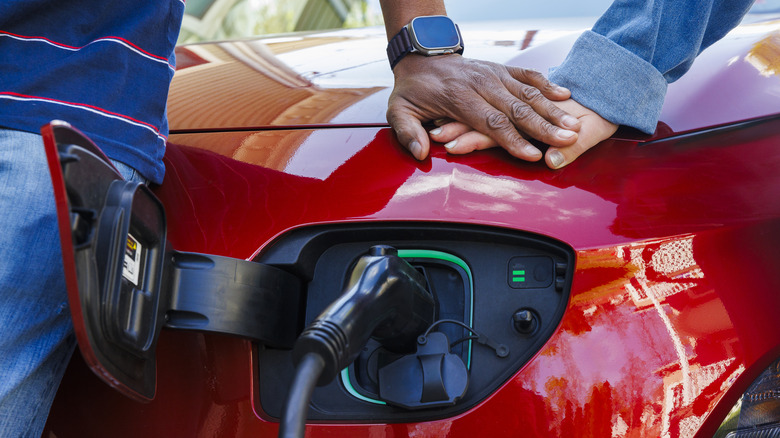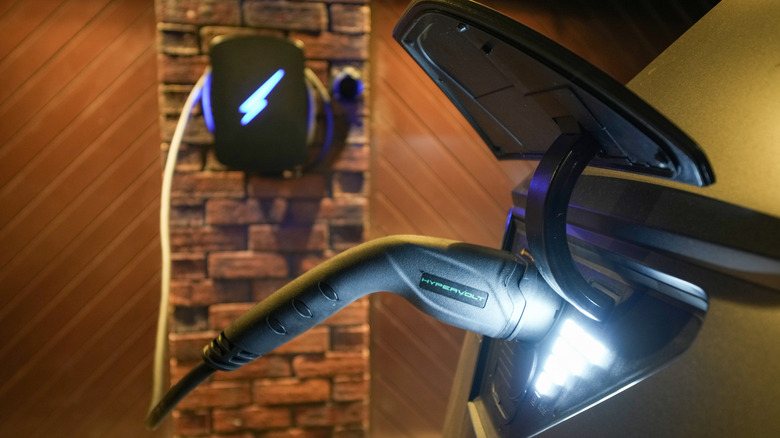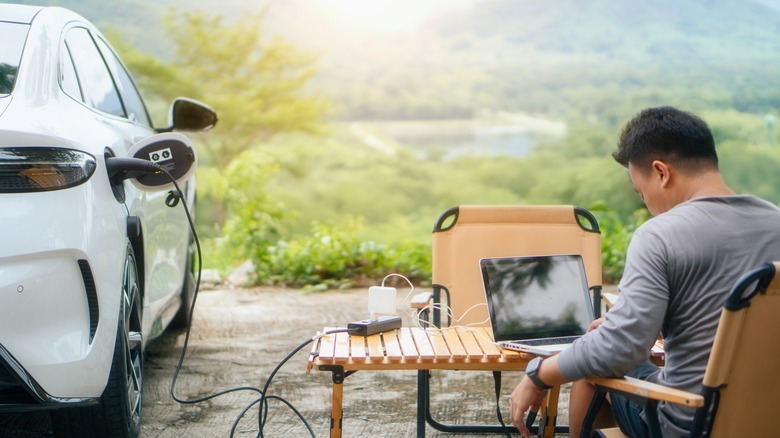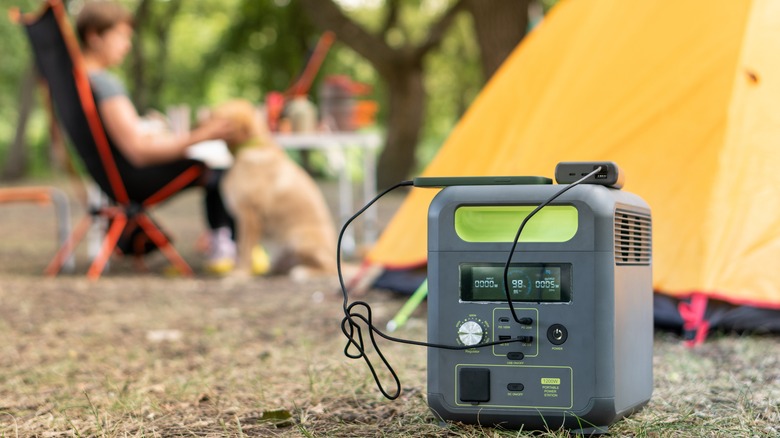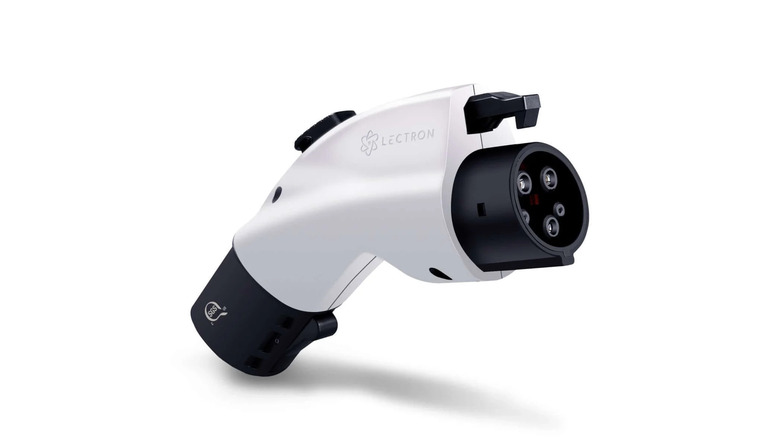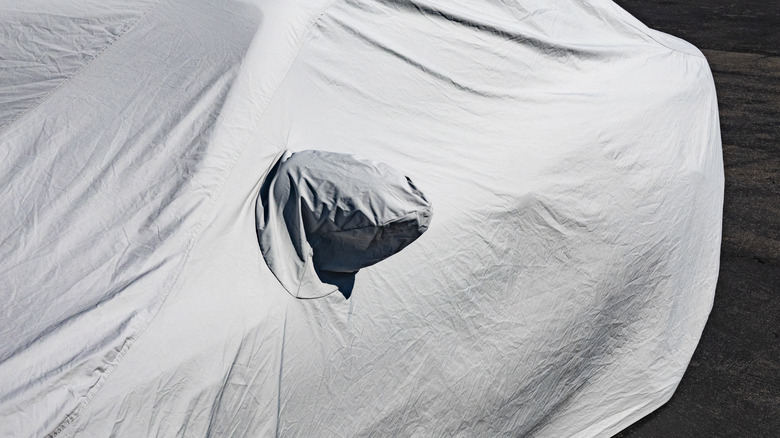The Top 5 Accessories Every EV Owner Needs
We may receive a commission on purchases made from links.
Range anxiety and limited charging infrastructure remain the biggest hurdles for mass BEV (Battery Electric Vehicle) adoption. Ask EV owners, though, and they seem to be very happy with their purchase. According to a 2025 J.D. Power U.S. Electric Vehicle Experience Ownership Study, only 12% are likely to replace their EV with a gas car. Moreover, 94% of current owners will consider buying an EV again.
In other words, owning an EV is not as scary as most people think. The infrastructure is growing, and EVs become more capable every passing year. Still, your EV life can be significantly improved by adding some accessories to your vehicle. That's true for any vehicle, so we'll focus mostly on EV-specific accessories here and exclude these useful gadgets for regular cars and EVs.
With these five accessories, we want to tackle the range anxiety and charging woes EV owners experience. In other words, they will make your EV ownership much smoother.
Level 2 Home Charging Station
Perhaps the biggest advantage of owning an EV is that you can charge it at home. This not only saves you the trip to a charging station for your day-to-day driving needs, but it's also significantly cheaper.
Still, the standard Level 1 home chargers that come standard with new EVs are very slow. Not an issue if you mostly use your EV in urban areas, because, with a maximum charging rate of 2.4 kilowatts, a Level 1 charger will top up the battery with 28 kWh of juice. That's more than 1/3 of the battery capacity of a Tesla Model 3 Long Range.
However, you can make your EV owning experience much more comfortable with a Level 2 charger. These home chargers support speeds of up to 19.2 kilowatts, meaning that you can fully replenish your battery in hours. That's a huge difference, and one that can completely change the way you use your vehicle. With a Level 2 charger, you'll get close to the spontaneity of gas cars, while still saving money on electricity.
However, installing a Level 2 charger isn't straightforward. Notably, hardwired chargers are connected directly to the electrical system. Meanwhile, plug-in chargers require a NEMA 14-50 240-volt power outlet. Both require a skillful professional and an electrical permit, though. SlashGear recommends the Grizzl-E Classic plug-in unit, one of the best home EV chargers on sale. It currently retails for $349.99 on Amazon and is available with NEMA 14-50 or NEMA 6-50 plug.
Vehicle-to-Load (V2L) Adapter
To achieve a useful range, electric vehicles carry massive battery packs. But what if you could use that electricity to power other gadgets? And we are not talking smartphones and tablets, but things like power tools, camping equipment, and fridges. For instance, you can even power your home during a power outage with vehicle-to-load bidirectional charging, which can deliver between 2.3 and 3.6 kilowatts, depending on the EV.
Now, this same feature is also available on some gas vehicles. Still, if you want to run anything other than a smartphone, you'll need to run the engine, which is highly inefficient. Meanwhile, EVs can be turned off and still power all gadgets. Some EVs can already be optioned with a 240-volt three-pin plug, like the Ford F-150 Lightning truck. Most only have an internal 120-volt outlet, like the Ioniq 5 and Kia EV6, but those can only work when the vehicle is on.
Teslas, on the other hand, only work with an adapter. Hence, for most EV owners, buying a V2L adapter is a smart move. A V2L adapter works when the vehicle is off, and it's also positioned right where you need it.
Depending on the model, you can even install a 240-volt adapter to run some heavy machinery. This 3.6-kilowatt V2L adapter is specifically designed for Tesla, though it costs an eye-watering $999.99. However, Hyundai and Kia owners have an option as cheap as $99.99, like this Lectron V2L Adapter on Amazon.
Portable Battery with Solar Panels
Using your EV's battery when camping can turn a stone age experience into a modern, pleasurable adventure. Still, using too many powerful gadgets will eat your EV range — not something you want to happen with no chargers nearby. Fortunately, you can mitigate that issue with a large power station. These batteries are the same as power banks for smartphones/tablets, but with much higher capacities.
The idea is to bring a fully charged portable battery on your camping trip and use it to power all your gadgets. These power stations are very powerful, offering an output of over 2,000 Watts. That's enough to power many electric gadgets, including a powerful outdoor projector or large 55-inch TV, smaller induction cooktop, mini fridge, multiple smartphones, laptops, etc. You can even use these power stations to charge your EV's battery — like using a gas container in an internal combustion vehicle. However, you can use solar panels to recharge the power station during the day and never run out of electricity.
However, which power stations and solar panels should you choose? Jackery and Anker are the power station brands we trust the most. They produce high-quality portable batteries and offer them in conjunction with powerful solar panels. This Anker SOLIX F2000 combo costs $3,997 on Amazon, but includes a huge 2,048Wh power station with 2,400-watt output and a powerful 2X400W solar charger. Meanwhile, this Jackery 2,042Wh station delivers 2,200 watts and costs $949 on Amazon, but comes without solar panels.
Charging Adapters
Perhaps the most annoying thing about driving an EV, at least in North America, is all those different charging standards. Tesla EVs, for instance, use a proprietary NACS (North American Charging Standard) connector, which can be used for Level 1 AC, Level 2 AC, and Tesla DC Supercharging. Other EVs, though support J1772 for Level 1 and Level 2 AC charging and have two additional DC ports below to support CCS (Combined Charging Standard) DC fast charging. Meanwhile, some older Nissan and Mitsubishi EVs used the old CHAdeMO standard.
Automakers recognize it's confusing and have recently started adopting Tesla's NACS in their new EVs. Looking at the current adoption rate, it's safe to say that most EVs in the near future will charge using NACS. Moreover, other EV charging station companies, like Electrify America, have already started implementing NACS connectivity. That's great for the future of EV adoption, but disconcerting for drivers of CCS-equipped EVs.
Fortunately, this is an easy fix with the right adapter. Famously, Tesla already offers a J1772 to NACS adapter in their models, and some other automakers provide NACS to CCS adapters. Still, it's a smart purchase for any owner. If your EV has a CCS port, you can use the Huacaitu NACS to CCS adapter that costs just $99.99 on Amazon and utilize Tesla's Supercharger network. If you want to use the slower Tesla Destination Charger found at hotels and restaurants, you'll need something like the Lectron Tesla to J1772 adapter that costs $118.99 on Amazon.
Car Covers and Sunshades
Running the AC in an EV will cut range, though the temperature greatly affects the effect. According to a study by Recurrent Auto, running the AC when the temperature is 90 °F (32 °C) will cut the range by 5%. However, at temperatures of 100 °F (38 °C), the range impact is up to 18%. Extreme heat isn't rare nowadays — Arizona and Nevada often experience temperatures higher than 110 °F (43 °C).
Suppose you live in cooler areas and leave your EV under the sun. The cabin will still reach 116 °F (47 °C) under the sun, even if the outside temperature is 95 °F (35 °C). Even worse, the dashboard can reach scorching-hot 157 °F (69 °C). As a result, the AC unit will need to work overtime to cool the space.
Hence, we'd highly recommend protecting your EV with an outdoor car cover. These will protect the interior from sunlight, with the added benefit of protecting the paint from the harmful UV rays. Make sure that the cover fits your EV; model-specific covers are the best choice, though universal-fit covers will also work, like this $36.99 12-layer Autsop cover for SUVs.
If you don't want to bother with a cover, sunshades are the next best option. Look for models that are easy to fit and offer good protection, like this $9.99 EcoNour foldable sunshade. For maximum protection, you'll also want to cover the panoramic sunroof with a model like this $49.99 Zanch roof sunshade for the Model Y.
